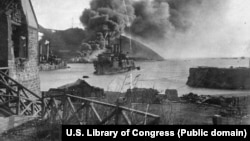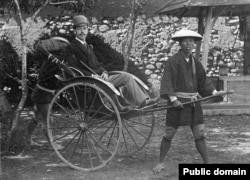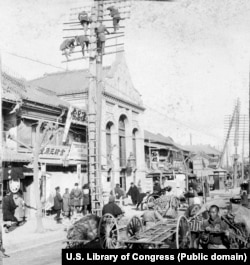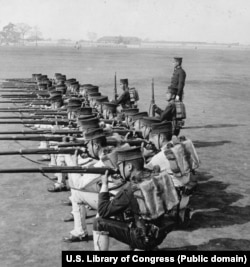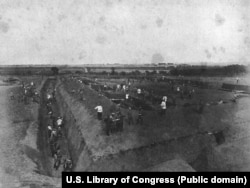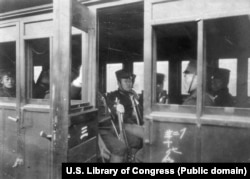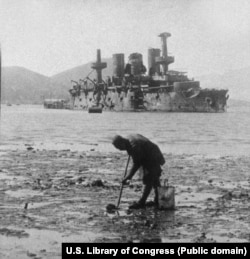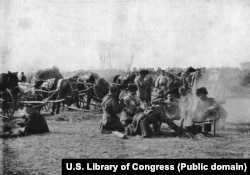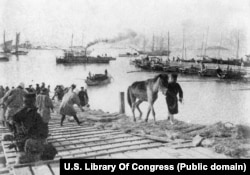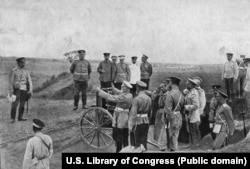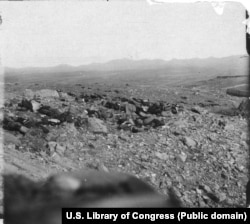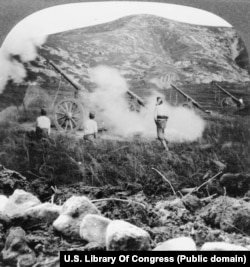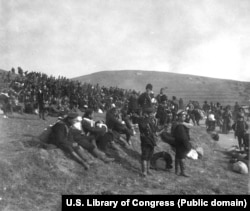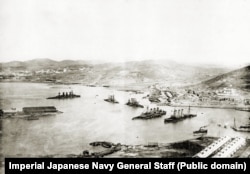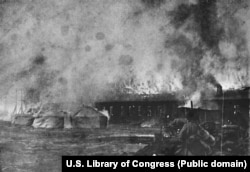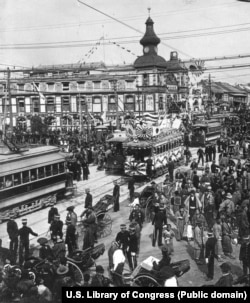On a rainy afternoon in 1891, five years before he would be crowned tsar of Russia, Nicholas Romanov was riding a rickshaw through the narrow streets of Otsu, Japan, when one of the policemen tasked with guarding the tsarevich rushed at him with a saber.
The attacker slashed the 22-year-old Russian twice across the head before being tackled to the ground.
Japanese reaction to the attempted assassination was deeply remorseful. Resignations were offered, thousands of telegrams from Japanese civilians were sent to the Russian delegation, and one young woman publicly killed herself in an act of extreme penance.
But the tsar's memory of standing "alone, in the middle of the street" in front of crowds who quietly looked on as he bled, fostered a deep hatred for the Japanese, whom Nicholas referred to as "macaques."
A decade after the Otsu incident, Nicholas II was on the throne of Russia and a major clash with Japan seemed inevitable. Causes for the hostilities were unrelated to the sword attack, but the scars on his scalp and the headaches the tsar still suffered certainly did nothing to avert the looming war.
After centuries of isolation, Japan in the late 1800s was a rapidly modernizing country and a rising military power. Japan had routed the Chinese military in a conflict over Korea and taken over territory including the Liaotung Peninsula, a finger of land just west of Korea with a prized naval port.
But Russia, France, and Germany, worried at Japan's rising influence in the region, strong-armed Tokyo into handing back the strategically crucial peninsula to China.
The handover was a humiliation for Japan, compounded by St. Petersburg then leasing the Liaotung Peninsula and its warm water harbor, Port Arthur, from China for 25 years.
Russian warships were soon docked in the Asian port, and the trans-Siberian railway was extended down the peninsula, meaning soldiers and materiel could be sent from St. Petersburg to Port Arthur in a matter of days.
Russia's tsar at the time was faced with a disaffected and increasingly restless population. One adviser had warned Nicholas that "to hold back a revolution, we need a small, victorious war."
Such a conflict could have rallied Russians around the autocracy and won enough land and resources to potentially relieve the dire economic situation in Russia.
Japanese society was outraged at losing the Liaotung Peninsula, which was viewed in the country as the rightful spoils of war, but Tokyo had no choice but to accept the diktat. Japan had zero chance of winning any potential conflict with the combined powers of Russia, France, and Germany.
But Japan soon received its ticket to push back in the form of a complex treaty with Britain. The 1902 Anglo-Japanese alliance bound each country to defend the other if it was attacked by two or more other countries. If war broke out between Russia and Japan, and a second country sided with the tsar, Britain would be obliged to enter the fray on the side of Japan.
Emboldened by the treaty, Japan began secretly planning for war, pouring most of its state budget into military preparations. Then, late on the night of February 8, 1904, a Japanese naval fleet launched a sneak torpedo attack on Russia's 1st Pacific Squadron inside Port Arthur. Three hours later, Japan declared war.
Despite damage to its fleet in Port Arthur, St. Petersburg believed the war would be a walkover. A Russian lieutenant remarked that his country's naval strength in Asian waters meant "we will easily beat not only the Japanese but also any combined Anglo-Japanese fleet if the British decide to get involved here."
Russian author Leo Tolstoy reacted with horror to news of the conflict. "Again war. Again sufferings, necessary to nobody, utterly uncalled for," he wrote. "Again the universal stupefaction and brutalization of men."
On February 8, ships from several countries in the neutral port of Chemulpo, today’s Incheon, were warned by Japan to "keep away," vowing that two Russian ships in the port would be targeted the following afternoon.
The Russian vessels chose to steam into open water to face the waiting Japanese fleet, cheered, as one witness recalled, by "about 400 British officers and men, who felt very sorry for them, and admired their pluck in giving battle."
The engagement ended with the outnumbered Russian vessels being riddled with shells and scuttled. The resounding defeat was a theme that would be repeated on sea and land for the Russian forces.
On a misty morning in April 1904, three battleships led by Russian Admiral Stepan Makarov steamed out to engage Japanese ships that had been prowling near Port Arthur. It was a trap. Several other Japanese vessels lying in wait joined the fight.
When Makarov attempted to flee back to port, his vessel, the Petropavlovsk, struck a mine and he and nearly 700 other men went down with the ship.
Makarov's replacement was Admiral Wilgelm Vitgeft, who in August the same year sailed into battle and was also killed when a salvo of Japanese shells smashed into his ship.
Stunned by the string of defeats, St. Petersburg ordered Russia's remaining naval forces on a seven-month journey from the Baltic Sea, halfway around the world, to the waters off Korea.
"Sacrifice the fleet if need be," Russian Admiral Zinovy Rozhestvensky said gloomily of the 33,000-kilometer naval mission. "But at the same time deliver a fatal blow to Japanese naval power."
On land, further defensive collapses followed for Russia, partly due to Japan's effective use of the new technology of machine guns, as well as the near suicidal bravery of Japanese soldiers. Japan's emperor had urged his soldiers to remember that "duty is heavier than a mountain...while death is lighter than a feather."
Russians attempting to hold onto land they occupied faced horrifying human wave attacks on fortified positions. The Japanese referred to the tactic as "human bullet" attacks.
Such tactics were eventually effective but were staggeringly costly for Japan. In one assault on a hilltop Russian position, some 4,000 Japanese soldiers were killed in a single day.
The Japanese besieged Port Arthur, picking off the remaining trapped Russian vessels from positions in the hills around the port. On January 2, 1905, Russian forces surrendered to the Japanese in Port Arthur.
Adding to woes in Russia's palace halls, protests erupted in St. Petersburg in January 1905 over the catastrophic war and the shortages it was causing in Russia. On January 22, thousands of protesters approached the Winter Palace in the center of St. Petersburg. The military opened fire on the marchers, killing at least 96 people.
By the time the weary crews of the Baltic Fleet finally arrived in Asian waters, the Japanese had complete control of land and sea. Admiral Rozhestvensky, the commander of the motley array of vessels, cabled to St. Petersburg that, given the circumstances, he had "not the slightest prospect of recovering command of the sea with the force under my orders."
Rozhestvensky was soon proven tragically correct. While trying to steam through the war zone to the safety of the Russian port of Vladivostok, his fleet was noticed by Japanese spotters and attacked. In what became known as the Battle of Tsushima, nearly all of Russia's remaining naval vessels were either sunk or surrendered to the Japanese. Some 5,800 Russian sailors were killed or wounded.
In September 1905, Russia and Japan signed a peace treaty that required Russia to recognize Korea as being within Japan's "sphere of influence" and give up its lease on Port Arthur. The Japanese failed to win indemnity payments that had been anticipated, but were widely referred to as one of the world's "great powers" after the decisive victory in the war.
Inside Russia, the defeat was a major factor in the 1905 revolution that emboldened many of Russia's radical left-wing movements, including the Bolsheviks, led by revolutionary Marxist Vladimir Lenin. In 1904, Lenin reacted to the war with typically blood-curdling language.
"Those who sow the wind shall reap the whirlwind!" he wrote.
